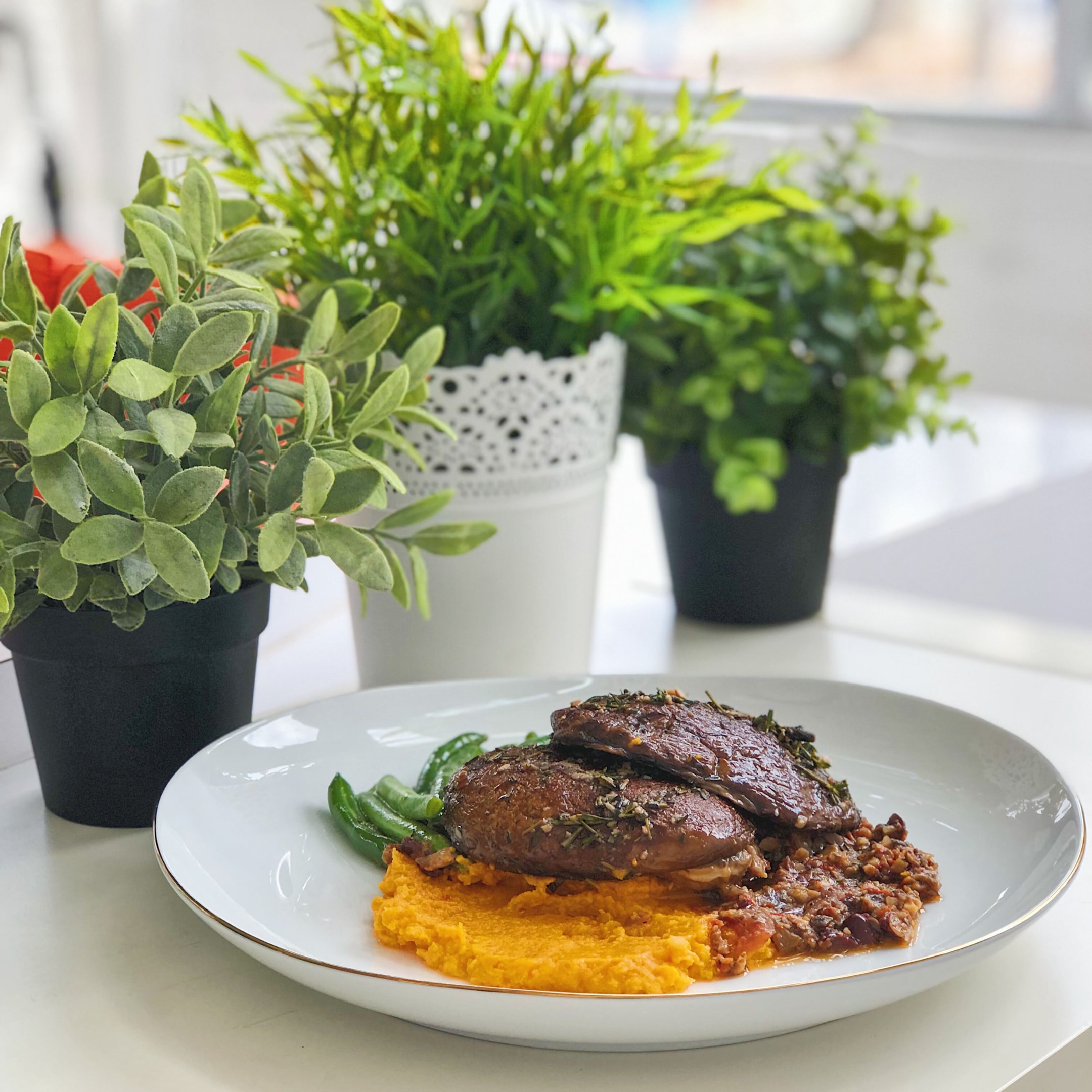Understanding Sodium and Potassium: Essential Guidelines for a Balanced Diet
Understanding Sodium and Potassium: Essential Guidelines for a Balanced Diet
Sodium and potassium are vital electrolytes that keep your body functioning smoothly. They regulate fluids, muscle contractions, and blood pressure. Learn how these minerals affect your health and how to balance their intake effectively. This article will guide you through their roles, recommended intakes, food sources, and potential health impacts of imbalances.
Key Takeaways
- Sodium and potassium are both essential for health, with sodium aiding nerve function and potassium helping to balance sodium’s effects on blood pressure.
- The recommended daily intake is 3,400 mg of potassium for men and 2,600 mg for women, while sodium should be limited to 2,300 mg or lower depending on health needs.
- Maintaining a balanced sodium-potassium ratio can lower blood pressure and reduce the risk of cardiovascular diseases, making food choices crucial for overall health.
The Role of Sodium and Potassium in the Body

Sodium and potassium are like the yin and yang of your body’s electrolyte system. They are essential for maintaining fluid balance and blood volume, which are critical for overall health. Sodium, often consumed as sodium chloride or salt, is vital for nerve function and muscle performance. However, it’s easy to consume too much sodium, especially given that over 75% of sodium intake comes from processed and restaurant foods.
Potassium, on the other hand, works to counteract the effects of sodium. It helps control blood pressure by relaxing blood vessel walls and allowing the body to excrete more sodium. When you increase your potassium intake, you help your body balance out the sodium, reducing its harmful effects. This interplay between sodium and potassium is crucial for maintaining optimal health.
At Athletes Kitchen, we prioritize your health by using whole foods, minimally processed and organic ingredients to create meals that are both delicious and nutritious. Understanding the roles of sodium and potassium helps us appreciate the importance of maintaining a balanced diet and the essential nutrients, including unsaturated fats, whole grains, and food groups, required for optimal health. We never use table or processed salt, only premium sea salt carefully filtered for microplastics to ensure the purest seasoning in every meal.
Recommended Daily Intake
Knowing how much sodium and potassium you should consume daily is the first step toward achieving a balanced diet. For potassium, men aged 19 years and older should aim for 3,400 mg per day, while women in the same age group should target 2,600 mg. These recommendations vary based on age, gender, and specific needs, especially for pregnant and lactating women.
When it comes to sodium, the Dietary Approaches to Stop Hypertension (DASH) diet recommends limiting sodium intake to 2,300 mg per day as a standard, with a stricter option of 1,500 mg per day for those with specific health needs. At Athletes Kitchen, we create meals that naturally contain sodium from whole, minimally processed foods. Our meals generally have 450–550 mg of sodium, ensuring you stay within the recommended range even if you’re eating multiple meals a day.
Balancing your diet by monitoring your sodium and potassium intake can significantly impact your health. Following these guidelines will help you manage your blood pressure and reduce the risk of cardiovascular diseases.
Common Food Sources

Finding the right foods to balance your sodium and potassium intake is easier than you might think. A significant portion of sodium comes from processed foods and dining out, contributing over 75% to daily intake. Managing your sodium levels requires being mindful of these sources.
Potassium, on the other hand, is abundant in a variety of different foods. Fruits like bananas and oranges, vegetables such as potatoes and leafy greens, and certain dairy products like low-fat milk and yogurt are excellent major sources of potassium. Fish, including tuna, halibut, and salmon, also provide a good source of potassium along with healthy omega-3 fats.
Incorporating potassium-rich options such as sweet potatoes, greens, and bananas into your diet can help counteract sodium’s effects and manage blood pressure. Choosing potassium-rich foods helps you naturally support your body’s electrolyte balance and overall health.
Effects of Imbalance
An imbalance in sodium and potassium intake can have serious health implications. A high sodium diet is linked to an increased risk of cardiovascular diseases and stroke. High blood pressure, a major risk factor for heart-related conditions, can result from consuming too much sodium, too much potassium, and too little potassium.
On the flip side, increasing potassium intake can help lower blood pressure, thus reducing the lower risk of heart disease and stroke. Balancing your sodium and potassium intake can mitigate health risks and promote better cardiovascular health.
Understanding these effects underscores the importance of maintaining a balanced diet. Managing your sodium and potassium levels significantly reduces the risk of developing serious health conditions.
Strategies to Balance Intake

Balancing your sodium and potassium intake requires a combination of smart food choices and practical strategies. One effective method is to use flavorful ingredients like onions, garlic, and herbs to enhance taste while reducing the need for salt. Cooking methods such as grilling or roasting can also bring out the natural flavors of food, minimizing the need for added salt.
Another practical tip is to rinse canned beans and vegetables, which can decrease their sodium content by up to 40%. Choosing fresh or frozen meats that aren’t treated with sodium solutions helps control sodium intake as well. When shopping, compare labels to choose products with lower sodium levels, and opt for reduced-sodium versions of condiments.
If dining out, request dishes without additional salt to manage your sodium intake more effectively. For personalized dietary plans, companies like Athletes Kitchen offer customized meal plans that cater to your specific needs, allowing you to enjoy life without worrying about counting calories or sodium levels.
Benefits of a Balanced Sodium-Potassium Ratio

Maintaining a balanced sodium-potassium ratio offers numerous health benefits. Increasing potassium intake can help to lower blood pressure. It may also reduce the risk of heart disease. Conversely, higher sodium to potassium ratios are associated with an increased risk of cardiovascular disease and all-cause mortality.
Many people consume too much sodium and too little potassium, especially those following a Western diet high in processed foods. By focusing on potassium-rich foods like avocados, spinach, pistachios, and squash, you can naturally support your blood pressure and hydration levels.
Achieving a balanced sodium-potassium ratio is crucial for long-term health. It helps control blood pressure, reduces the risk of cardiovascular diseases, and promotes overall well-being.
Special Considerations for Certain Medical Conditions
Certain medical conditions require special dietary considerations, particularly concerning sodium and potassium intake. Individuals with kidney dysfunction should limit high-potassium foods like bananas and potatoes to avoid complications. Avoiding added salt can also help manage sodium levels effectively in patients with kidney issues.
Dietary recommendations for those with kidney stones often include reducing protein intake to lessen the kidney’s workload. Patients undergoing dialysis may have specific guidelines to follow regarding sodium and potassium intake.
Understanding these special considerations is essential for managing health conditions effectively. Adhering to specific dietary guidelines, for example, helps individuals with medical conditions maintain good health and stay healthy while avoiding complications.
Why Sodium Isn’t the Enemy: The Real Key is Balance
Sodium often gets a bad rap, but it’s essential for fluid balance, nerve function, and muscle performance. The problem isn’t sodium itself but consuming too much sodium without enough potassium. Modern diets often lack potassium, which is why balancing your electrolytes is crucial.
Focus on potassium-rich foods like avocados, spinach, pistachios, and squash to naturally support blood pressure and hydration. Staying properly hydrated and maintaining electrolyte balance is far more effective for long-term health than simply slashing salt.
At Athletes Kitchen, our meals are thoughtfully crafted to deliver nutrient-dense, real food that fuels your body without you stressing over every gram of sodium. By understanding that sodium isn’t the enemy but rather a part of a balanced diet, you can make smarter nutritional choices that promote overall health and eat well.
Summary
In summary, sodium and potassium are essential electrolytes that play crucial roles in our bodies. Maintaining a balanced intake of these nutrients is vital for controlling blood pressure, reducing the risk of cardiovascular diseases, and promoting overall well-being. By understanding the recommended daily intake, common food sources, and the effects of an imbalance, you can make informed dietary choices.
Remember, the key to good health is balance. By following practical strategies to manage your sodium and potassium intake and considering special dietary needs for certain medical conditions, you can achieve a healthier, more balanced diet. Embrace the journey to better health and enjoy the benefits of a well-balanced sodium-potassium ratio.
Frequently Asked Questions
What are the recommended daily intakes for sodium and potassium?
You should aim for 3,400 mg of potassium daily if you’re a man and 2,600 mg if you’re a woman. When it comes to sodium, try to stick to 2,300 mg daily, or 1,500 mg if you have specific health concerns.
What are some common food sources of potassium?
If you’re looking to boost your potassium intake, reach for bananas, oranges, potatoes, leafy greens, low-fat milk, yogurt, and some fish like tuna and salmon. These foods are not only delicious but also packed with potassium goodness.
How does an imbalance in sodium and potassium intake affect health?
An imbalance in sodium and potassium can raise your blood pressure, putting you at greater risk for cardiovascular diseases and stroke. Keeping your potassium intake high while managing sodium can help safeguard your heart health.
What strategies can help balance sodium and potassium intake?
To balance sodium and potassium intake, you can use flavorful ingredients like onions and garlic, choose fresh or frozen options, and rinse canned foods. These simple changes can make a big difference in your diet!
Are there special dietary considerations for people with certain medical conditions?
Absolutely, if you have kidney issues, it’s crucial to limit high-potassium foods and reduce your protein intake. Adjusting your salt consumption is also important, especially if you’re on dialysis.
